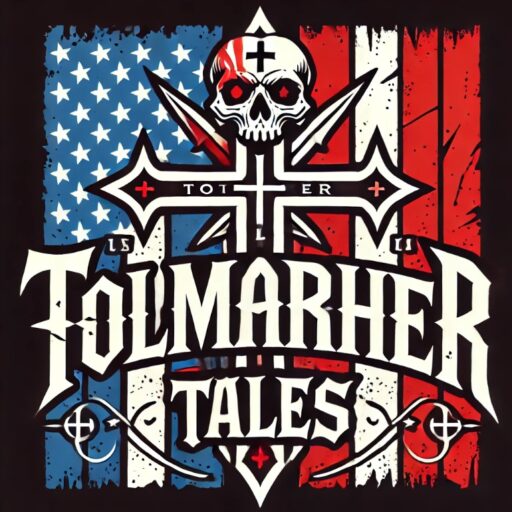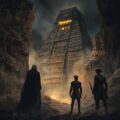Continuus Library: The Star Grave (Legends of the Black Sun #1)

The Stellar Tomb: Dark Genesis of the Legends of the Black Sun
Within the colossal framework of the Continuus Nexus, the series Legends of the Black Sun represents a tonal and symbolic inflection. The Stellar Tomb, the first novel of this third series, marks the beginning of a narrative filled with mysticism, decay, and new latent threats lurking in the forgotten corners of the Exodus galaxy. In this work, Tolmarher not only expands the lore established by Chronicles of Aqueron and by the series La Pureza—especially through its novel Echoes in the Darkness—but also introduces a tone of archaeological space discovery, imperial melancholy, and exodite peril that defines a new era for readers.
Although Echoes in the Darkness, as part of the La Pureza series, develops parallel and autonomous plots, its indirect complement Echoes in Eternity offers fundamental revelations about the origins of Axia, the ancient wars, and the figure of Jeor Arryn. This connection is not direct with Legends of the Black Sun, but it expands the metaphysical and cosmogonic background of the universe, shedding light on the true scope of the exodite threat.
This first novel also includes a series of appendices detailing the stellar history of Exodus, providing valuable historical context that enriches the reader’s understanding of the universe and the forces at play. These complementary documents are essential for any reader wishing to delve deeper into the fate of the great lineages, fallen alliances, and the political, religious, and technological background of the galaxy.
The narrative genesis within the Continuus Nexus
Set in the year 2561 of the Exodus calendar, The Stellar Tomb unfolds after the collapse of the Human Empire and during the rise of new interstellar alliances. The work serves as a nexus between the ancient civilization of the Kheb and the mysterious artifacts of the Exo race. Its chronological and geopolitical placement contextualizes the events in a time of exploration, diplomatic tensions, and struggles over the remnants of a once-great power. This third series ventures into the galactic voids where secrets of the past lie buried beneath stellar tombs guarded by alien sentinels that defy time.
A universe after imperial decay
The galaxy is no longer unified. Former powers like the Pact, the League, the Federation, and the Mordus have fractured. The Empire exists only in name, barely surviving in its capital, Corran. In this fragmented environment, new actors emerge—like the mysterious Rosak Corporation—while dormant threats reawaken, such as the Exo drones or the looming return of Axia. This decadence permeates every political conversation, every drifting ruin, every sacrifice made by a civilization clinging to myths and relics to survive its irrelevance.
Main characters: the soul of the epic
Deckard, an old smuggler and ex-military officer, embodies the soul of the novel. With his worn-out irony and longing for one last fortune, he represents the everyman who finds himself unwillingly swept into a millennia-old saga. At his side is Khotor, a tenth-generation Tyrell android whose programmed consciousness borders on humanity. Together, they form an unforgettable duo—absurd yet endearing.
James Droma, in contrast, introduces the ritual brutality and chaotic fervor of the renegade Andalore. He is a killer, a tribal warrior whose inherited armor carries as many stories as his scars. Finally, the Mana Master Ardel Nomah reveals the decaying, dependent face of Mordus religious science—a pitiful figure who, despite his cognitive power, lacks willpower.
One name that echoes from the shadows of the text, though absent in person, is Sael. His figure emerges as the living heir of the foundational bloodlines. Sael, son of Jonah Kheb and a symbol of exodite sacrifice, represents the union of ancestral spirituality and the symbiotic power of ancient artifacts. Though his role is only hinted at through genetic legacy, his spectral presence promises future narrative development in the series.
The Stellar Tomb: iconic scenes and turning points
Among the most memorable scenes is Khotor’s boarding of the destroyed Mordus ship. It’s a moment steeped in tension, stellar beauty, and an archaeological sci-fi atmosphere reminiscent of classic science fiction. The discovery of a girl suspended in a black Exo sarcophagus marks a narrative turning point. Her very presence disrupts the fate of the characters, raises questions about the Kheb bloodline, and brings the Exodite legacy back into focus.
Likewise, the conversations between Vashir and Wotan Daneron aboard the Banthu on their way to Corran are rich with imperial nostalgia. They reflect on the rise and fall of civilizations, recalling the decisions and consequences of Jonah and Jorah Kheb. Finally, Droma’s assault on the diplomatic ship and his capture of Nomah constitute a scene of brutal clarity that foreshadows Rosak’s hidden intentions.
Narrative style: an odyssey through ruins and hope
Tolmarher adopts a more mature, introspective, and melancholic tone than in previous entries. The pacing is deliberate and immersive, with descriptions drawn from both space opera and archaeological thrillers. References to ancient history, dead languages, imperial traditions, and technological relics imbue the work with near-biblical weight.
The prose is built with a measured cadence, prioritizing atmosphere over speed. The dialogues are filled with characterization, allowing even brief figures to breathe with distinct identity. In sum, the narrative style of The Stellar Tomb privileges detail, mystery, and introspection, elevating it far above superficial adventure.
Exodite symbolism and the legacy of the Kheb
A core element of the novel is the return of the Exodite mystery. Exo ruins, autonomous sentinels, suspended-energy sarcophagi, and artifacts that respond only to Kheb DNA reintroduce the theological-technological tension present in the cosmology of La Pureza, particularly in Echoes in Eternity. The Kheb bloodline, indirectly invoked, remains the key to secrets humanity has yet to grasp.
The girl found in the tomb is a living enigma. Her cryosuspended state, her placement in an Exo sarcophagus, and her apparent connection to the ancient bloodlines foreshadow a saga where genetic mystery will once again take center stage.
The Axia threat and scars of the past
Though Axia does not appear directly, its shadow looms large. The latent fears of the Mana Master, the references to Estigia, the ancestral flight of the Andalore, and the surveillance protocols around Exo Tombs all reflect the collective trauma left by the Machine Mind. Axia is a near-theological threat, the dark demiurge that gives meaning to pacts, betrayals, and the religions of the universe.
Rosak: the mystery of a rising power
One of the novel’s greatest strengths is the introduction of the Rosak Corporation—an entity lurking in the shadows with the economic and logistical power to terraform planets, fund clandestine operations, and employ Andalore assassins. Its involvement hints at the rise of a new geopolitical force that will challenge traditional alliances.
Its connection to Droma and the capture of Nomah suggest the onset of a silent war. Rosak’s interest in Exo relics and apparent knowledge of The Stellar Tombs indicate it is more than just a mining or terraforming company—it may be a cult with older, darker goals.
The threshold to the Legends of the Black Sun
The Stellar Tomb is more than an introductory novel—it is a statement of purpose. With unforgettable characters, powerful ambiance, and a narrative infused with legacy and ruin, Tolmarher opens a new phase of his universe. Though it stands alone, it remains deeply entwined with the soul of the Continuus Nexus. It is essential reading for longtime followers and an ideal entry point for new readers seeking a dark, spiritual space opera.
The Stellar Tomb reminds us that beneath the ruins of the past lie the keys to the future—and that true empires, like myths, never die. They wait beneath the stars, sleeping, in their tomb.
![]()










